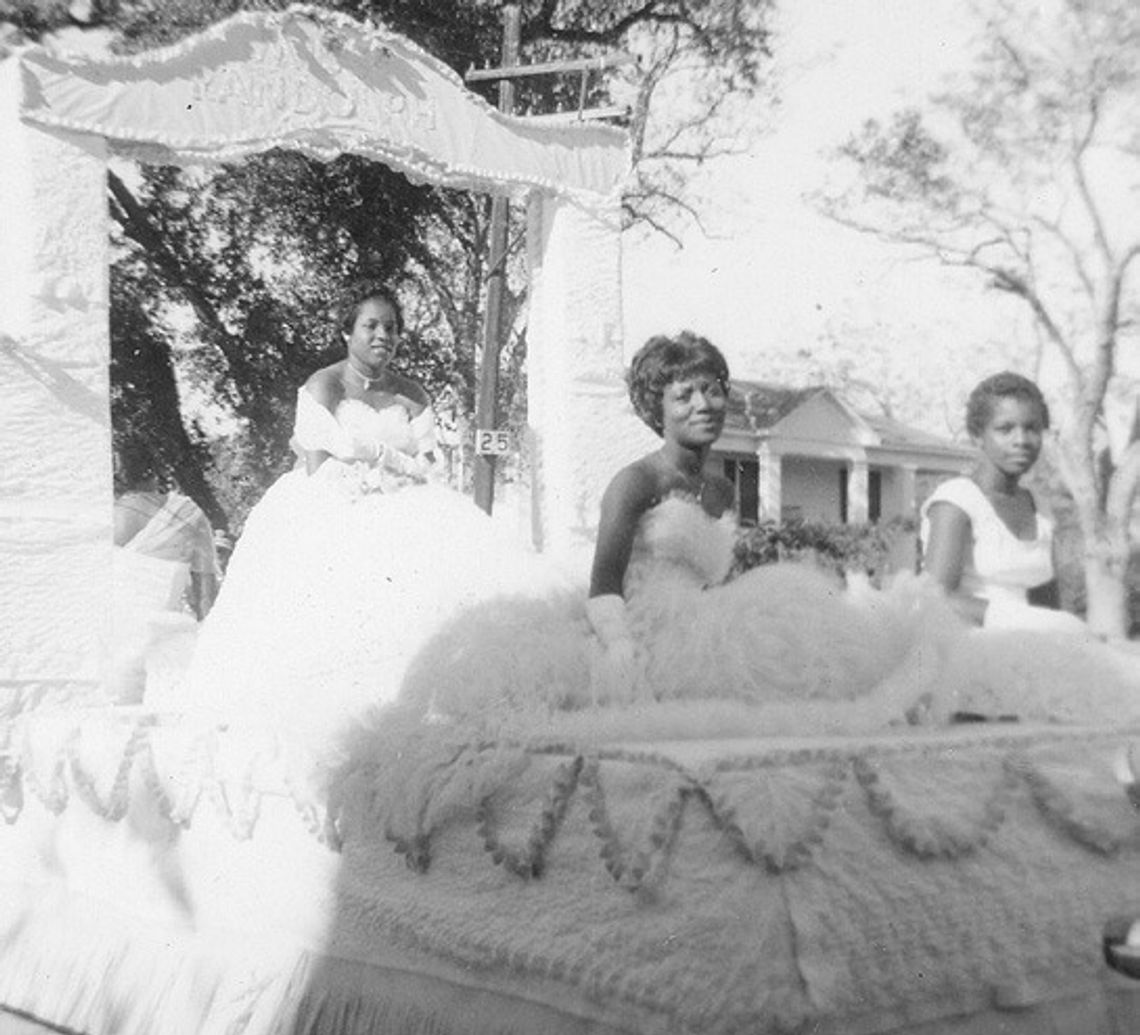Early Emancipation Day celebrations in Fayette County
Float in the 1961 Juneteenth Parade in La Grange, courtesy of Lorenza Crosby
Juneteenth celebrations in Texas began shortly after the Civil War, but that term was not widely used here until the early 1900s. Instead, they were referred to as “Emancipation Day” celebrations. Early on African Americans held annual festivities at La Grange, Fayetteville, Schulenburg, Flatonia and even some of the smaller communities like Black Jack Springs. We do not have descriptions of the first celebrations in the county.
The earliest description is from Flatonia, described in the July 3, 1879 Argus newspaper: “There was quite a large turn out on the occasion. A procession was formed and marched through the streets and thence to a grove near town, where the speaking took place. The procession, as it passed through our principal streets, made a very good appearance. The female portion of it came first, all or most of whom were dressed in white. The men followed on foot and horseback, and all moved in perfect order, with no semblance of anything rude or disorderly… “Speeches were made by Robert Coffee, David White, Surrey Wink- field and Maria Benson, all of whom acquitted themselves to the satisfaction of those assembled. There was an abundance of substantial food interspersed with delicacies to appease the appetites of the multitude. After the speaking was over, the remainder of the day was spent in eating, drinking and amusements of different kinds…” The June 21, 1883 issue of the La Grange Journal described that city’s celebration: “The celebration of the 19th among the colored people here on last Tuesday, proved to be a grand success. About nine o’clock the procession formed in the upper part of town, with the brass band and decorated wagons, etc., and proceeded down La Fayette street to the square and then marched around the square and down to Alexander's Park. Much taste was displayed in the decoration of the wagons, and they added much to the beauty and splendor of the procession. At the Park, Col. J. G. Shermack read the Proclamation of Emancipation and Judge Teichmuller delivered a very able and interesting address to them. About 12 o’clock the dancing commenced and was kept up until after midnight, all seeming to enjoy themselves very much…” Both of the featured speakers were white, although Schermack taught in the local black school.
There’s a bit more detail in the June 23, 1892 issue of the La Grange Journal about the previous weekend’s revelries: “The colored population of LaGrange celebrated emancipation day last Saturday in good style. It is said there were two celebrations and two processions, but The Journal saw only one and that was the one which was under the command of General George Green, grand marshal. This procession was gotten up in very creditable style. A band wagon with an excellent brass band, two floats, the first containing the King and queen and royal attendants, the other several persons representing Indians; a cavalcade of women on horseback, dressed in blue, each bearing a broom, followed by a number of persons mounted on horses, mules, etc., all directed by Grand Marshal Green and a number of assistant marshals, constituted the procession.
“After marching around the public square and through the principal streets the procession repaired to a grove in the northern portion of the city, where, after listening to an ad- dress delivered by Mr. A. J. Rosen thal, they spent the day and a portion of the night in dancing and other amusements.
“The Journal has been informed that everything passed off in good style, and that the celebration was the most creditable ever gotten up here.” Five decades later, Benno Harigel, the longtime editor of The La Grange Journal, remembered George Green as a gray-haired former slave who regularly led the pa- rades on a fine horse, carrying the stars and stripes, and his head covered with a stovepipe hat reminiscent of Abraham Lincoln. Born in Virginia, Green had been in the La Grange area since about 1853.
Sources: Flatonia Argus, The La Grange Journal, Fayette County’s 1867 Voter’s Registration List in the Fayette Heritage Museum and Archives



